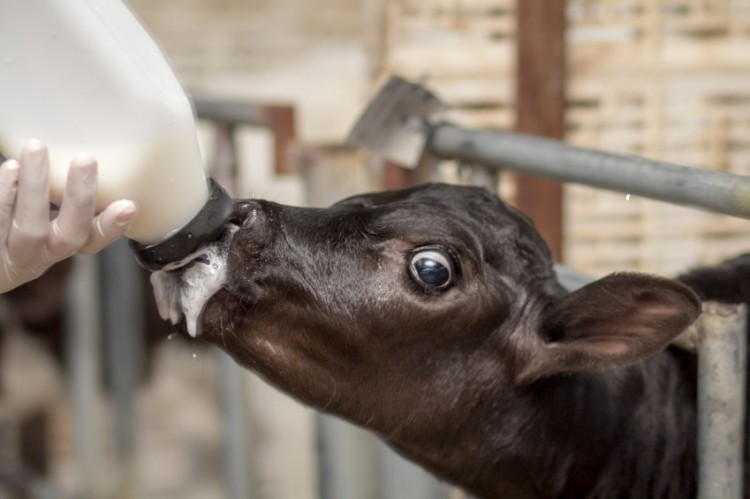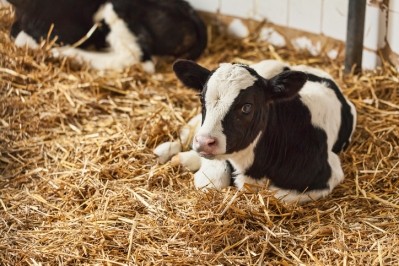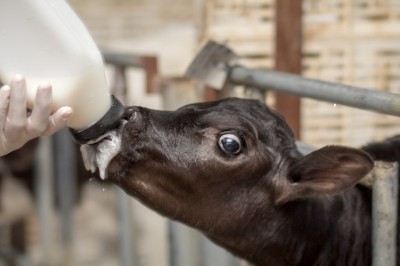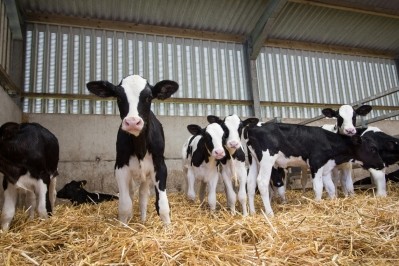No productivity gains from boosting dairy calf milk intake: study

“Though there are benefits of more natural behavior and improved health in calves offered higher quantities of [whole milk] WM, [the] economic benefit may not be demonstrated in first-lactation performance.
Despite the improvements in growth during the pre-weaning period, no significant differences in age at first calving or milk yield existed.
These data suggest that conventional WM feeding programs [up to four liters of WM daily] are sufficient for neonatal nutrition for dairy heifers housed in an insulated, mechanically ventilated, controlled environment,” said the researchers led by Vernon Osborne from the Department of Animal and Poultry Science in Ontario’s University of Guelph.
Writing in this month’s edition of the Journal of Dairy Science, the animal nutrition experts said elevated daily whole milk feeding did, however, improve calf average daily weight gain (ADG) pre-weaning and body weight (BW) up to 52 weeks of age.
But the team concluded that post-weaning, differences in live BW and skeletal growth were no longer apparent after three and twelve months of age, respectively.
Shift in dairy calf nutrition research
Over the past decade, dairy cattle nutritionists have been investigating the effects of increasing the supply of milk to young calves.
Some research on enhanced milk or milk-replacer (MR) feeding has found that increased ADG during the first two months of life results in significantly greater body weight at two years of age (Robelin and Chilliard, 1989 and Moallem et al 2010)
Additionally, higher growth rates in early life have been observed to reduce age at first calving (Raeth-Knight et al, 2009) and increase milk yield (Bar-Peled et al 1997, Moallem et al 2010).
However, not all literature agrees Davis Rincker et al (2011) and Terre et al (2009) conducted similar experiments investigating the effects of enhanced MR feeding on subsequent first-lactation performance and found no significant results, said the authors.
Limited inquiry into whole milk feeding on calf growth
Most enhanced feeding systems have focused on MR feeding with added protein concentrations but the Canadian researchers say there has been limited to no research focused exclusively on whole-milk (WM) feeding on calf growth and later milk production.
Thus, the goal of the University of Guelph team was to determine the effect of additional WM supply on growth performance during the neonatal period, birth to eight weeks of age, and first-lactation performance in Holstein dairy cows.
Based on previous findings, the Canadian researchers said they had hypothesized that a neonatal calf WM feeding system would “significantly” affect subsequent lactation performance.
The study
The trial consisted of two treatment groups.
At birth, 152 Holstein heifer calves were randomly assigned to one of two feeding systems so that calves would be fed either four or eight liters of whole milk (WM) per day.
The calves were bucket fed two or four liters of WM twice daily at 7am and 4pm.
Each calf was housed individually in temperature-controlled nurseries and had unlimited access to water and textured calf starter daily.
The results
Overall, the team found the whole milk feeding level did not affect age at first calving or milk production parameters.
The findings indicate calves consumed greater volumes of textured calf starter when fed four as opposed to eight liters of WM daily, and water intakes mirrored starter intakes.
Rumen pH was higher in calves that consumed eight liters of WM per day than in those calves on half that daily liquid intake.
The results showed lower starter intake led to higher ruminal pH, reducing the possibility of sub-acute ruminal acidosis.
Calves reared on eight liters of WM per day were heavier at day 56 than calves reared on half that quantity.
Structural measurements were significantly greater for calves that consumed the higher plane of nutrition.
But the team said the differences observed in withers height and live body weight due to WM feeding level were not apparent by three and twelve months of age, respectively.
Source: Journal of Dairy Science
Title: Effect of enhanced whole-milk feeding in calves on subsequent first-lactation performance
Published online ahead of print: doi:10.3168/jds.2014-7959
D. J. Kiezebrink, A.M. Edwards, T.C Wright, J.P. Cant, V.R. Osborne







